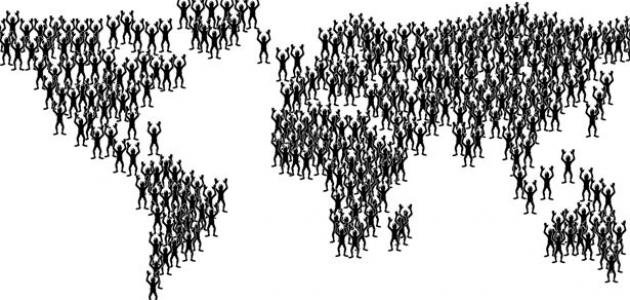
World population The world's population is the approximate number of people living on the planet's surface. Demography, the population census and population, is used to calculate the population. It includes a study of the size, structure and distribution of these populations by several Standards, including birth, death, income, etc. [1] The world's population now stands at 7.359 billion people. [2] The world population has increased significantly from the 6.929 billion registered in 2010, the number of the world's population in 2000, which amounted to 6.126 Billion, while the current figure was significantly higher than the population in 1990, which reached 5.309 billion people. [3] Population growth in the world reached 1.13% in 2016, down from the population growth rate of 2012, which reached 1.22% and population growth for the year 2000 population, which reached 1.28%. The highest population growth rate was recorded in 1968, which reached 2.1% in 1969, followed by 1969 with a population growth rate of 2.09%. [4] Population Distribution by Region The world population is mainly divided into six The following regions are as follows: [5] Area Population Population density (person / km2) Ratio Asia 4,436,224,473 143 59.7% Africa 1,216,129,815 41 16.4% Europe 738,849,002 33 9.9% Latin America and the Caribbean 641,029,306 32 8.6% North America 360,529,324 19 4.9% Oceania 39,901,355 5 0.5% The five most populous countries in the world are ranked in the top five countries in terms of population: [2] China: 1,373,541,278 people. India: 1,266,883,598 people. United States of America: people 323 995 528. Indonesia: 258,316,051 people. Brazil: 205,823,665 people. The lowest five countries in terms of population in the world were classified as the lowest five countries in the world in terms of population: [6] Vatican: 1,000 people. Nauru: 9,591. Tuvalu: 10,959 inhabitants. Palau: 21,347 people. Monaco: 30,581 inhabitants. The world's six most populous cities have been classified as the six most populous cities in the world: [7] Tokyo (Japan): 38 million people. Delhi (India): 25 million people. Shanghai (China): 23 million people. Mexico City (Mexico): 21 million people. Mumbai (India): 21 million people. Sao Paulo (Brazil): 21 million. Population distribution by religion According to a 2010 study, 8 out of every 10 citizens in the world belong to a religion or religious group, accounting for 84% of the world's total population. The following is a presentation of the world's most prominent religions, the number of its followers, And their ratio to the population: [8]
Christianity: 2.2 billion people (31.5%). Islam: 1.6 billion people (23.2%). Non-religious: 1.12 billion (16.3%). Hinduism: 1 billion people (15%). Buddhism: 500 million people (7.1%). Popular religions: 400 million people (5.9%). Jewish: 14 million (0.2%). Other religions: 58 million (0.8%). Population distribution by age A recent study found that life expectancy in 2013 for the population of the land is up to 71 years. [9] The distribution of the world population according to the categories or age groups they belong to is as follows: [6] 14 years: 1,862,956,402 people (25.44%). 15-24 years: 1,183,541,477 people (16.16%). 25-54 years: 3,011,011,083 people (41.12%). 55-64 years: 629,931,485 people (8.6%). 65 years and over: 635,747,010 (8.68%). Population distribution by language The number of languages spoken in the world is approximately 7,100 languages, 80% of which are spoken by about 100,000 people or less, 130 languages are spoken by 10 people or less, and Asia has the largest number of languages spoken. The continent has 2,300 languages, followed by Africa with 2,140 spoken languages, the Pacific basin with 1,310 languages, 1,060 languages in the Americas and, finally, 290 languages spoken in Europe. The following is a presentation of the most widely spoken languages in the world: 6] Mandarin Chinese: 12.2% Spanish: 5.8% English: 4.6% Arabic: 3.6% Indian: 3.6% Albert The percentage of illiterates in the world reached 1,068,306,672, 15% of the total population, while the number of illiterates in the world reached 1,068,306,672. (Literacy) was 6,197,479,274, 85% of the total population. [10] The highest proportion of learners in the world were in North Korea, where the number of educated was 100%. [11] Each level of education around the world for 2015: [10] Post-secondary education: 725,515,860 people. Higher secondary alim: 1,431,279,740 people. Preparatory education: 1,213,698,370 people. Primary education: 932,093,060 inhabitants. Unfinished primary education: 316,235,420 people. Without education: 767,773,610 people.
Flagged. You used tag #deutsch again. Neither your post is written in german (#deutsch) or has any relationship to germany. Please stop that.